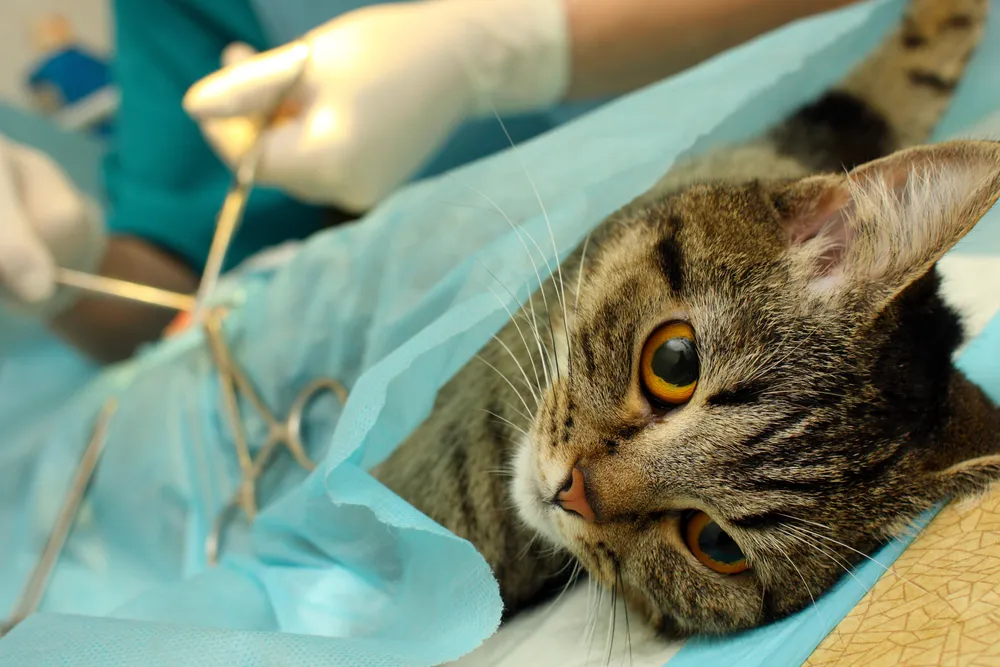The instinct of procreation is a natural phenomenon for all animal species. Until old age, under favorable circumstances, most representatives of fauna are capable of producing numerous offspring. However, this is not the case with domestic pets. Here the issue of “fruitfulness” of the animal no longer depends on nature, but on its owner. And if there is no purposeful interest in breeding, many owners of cats and dogs prefer not to reproduce their pets. The only rational and humane way to deprive an animal of its productive function is to sterilize it.
The importance of sterilization
There can be several reasons for removing an animal’s reproductive organs, ranging from ethical to medical. Despite alternative modern remedies for dealing with periodic “cat walks” in the form of various hormones, pills and drops, many cat owners still opt for sterilization. This method allows not only to regulate the appearance of unwanted offspring, but literally keep your pet healthy. Nowadays the procedure of such surgeries is not dangerous or complicated and has long been considered routine in veterinary medicine.
Most often, sterilization of a cat is used in cases where:
- The animal is kept at home with no or partial access to the outdoors in order to prevent unplanned offspring;
- The presence of pathological processes in the genitourinary and gynecological areas;
- In order to prevent the development of genital diseases such as tumors, infections, cysts or cancer in old age;
- The animal’s reluctance to be put on hormones or chemicals that inhibit sexual desire.
Contrary to popular opinion regarding the harmful effect of sterilization on cats’ health it should be noted that animals subjected to this manipulation have strong immunity and a healthy mind. The animal fully retains its inherent temperament and behavioral qualities. “Neutralization” of hormonal functioning of the sex glands does not affect the character and mental development of the animal. The only changes that take place are the absence of aggression in the animal. A cat or a male cat after the operation will behave more calmly, and will be gentle and affectionate. It has been noted that it is among neutered animals the highest percentage of long-livers.
Spaying and neutering - is there a difference?
Very often the term ”sterilization” is used by veterinarians for cats (females) and “castration” for cats (males). This is done for the purpose of better understanding between doctors and pet owners. But from the professional medical point of view these concepts are fundamentally different in their content, the way they are carried out and their significance for the animal’s organism. What is the difference between these two methods of combating “feline fertility”?
Cat sterilization and cat sterilization is the ligation of the fallopian tubes or the seminal ducts while preserving the animal’s reproductive organs at all times. This promotes the full hormonal activity of its body, but without the possibility of conception. That is, all natural sexual instincts of the animal are preserved, however, due to its sterility, mating does not end with offspring.
Castration as well as sterilization applies to individuals of both sexes and consists in the complete or partial removal of the reproductive glands:
- In cats, it is either the ovaries alone, or the ovaries along with the uterus;
- Cats have only the testicles.
After such surgery, all of the animal’s sexual instincts atrophy and disappear.
However, in terms of the risks to a cat’s health, sterilization does not guarantee 100% protection against the development of reproductive organ pathologies, neoplasms and various inflammatory diseases in future. While continuing to function, the reproductive organ can easily “turn” into a real “time bomb” and over time “explode” with any unexpected consequences for the animal. That is why most veterinarians today prefer neutering as the most reliable way to solve the problem of the reproductive activity of a pet.
As for terminological correspondence, the term ”sterilization” is allowed for easy “people’s” understanding and orientation in the medical specifics of the concepts.
Benefits of sterilization
- No physical discomfort for the cat during heat;
- Prevention of tumors of the mammary glands, ovaries, uterus and purulent pyometra;
- Solving the problem of unwanted offspring;
- Improvement of the animal’s character, disappearance of aggression;
- Absence of sexual behavior towards foreign objects;
- Elimination of the risk of tumors and inflammations of the reproductive organs of the animal;
- Effective prevention of urogenital diseases in cats and cats;
- Atrophy in the animal instinct of “roaming”;
- Maximum domestication of the pet.
Disadvantages of spaying
- The need for general anesthesia during the strip operation and the associated possible risks;
- Quite a long rehabilitation period after coming out of anesthesia;
- Increased interest in food and uncontrolled food intake;
- The necessity in some cases of a strict diet and the use of hormone stimulating drugs.
When can surgery be performed?
Cat sterilization is performed according to medical indications and depends directly on the age of the animal as well as its state of health. Generally a cat is operated on at a young age before the first heat, provided that it is physically and sexually mature. The optimal requirements for sterilization of an adult, supported by the vast majority of veterinarians, are:
- The animal reaching puberty, at least 6-7 months of age (depending on the breed);
- Carrying out the operation before the first heat;
- waiting for the end of heat, if any, and preventing the pregnancy of the cat;
- carrying out sterilization at least one week after the end of heat;
- absence of unfavorable factors for this procedure - mastitis, milk, pregnancy, kittens, etc.
Castration of cats at a younger age (4-5 months) is fraught with serious complications in the physiological and mental development of the cat. Many years of veterinary practice has shown that neutering animals at the age of 6 months to 10 years produces the most positive results. They tolerate the operation perfectly and the risk of negative consequences is minimized.
The situation is different for adult cats after they have reached the 10-year mark. In this case, the percentage of adverse outcomes and possible postoperative complications is directly proportional to the age of the cat. That is, the older the cat, the higher the risk! In addition, when it comes to preventing mammary gland cancer, late castration does not provide the desired prevention.

And the when spaying a cat is not recommended at all is when it has a negative prognosis for existing pathologies (cancer) and at a deep old age (16 years or older). But whenever a cat is operated on, it must first be thoroughly examined and consulted by a veterinarian.
Spaying methods
Sterilization is usually done in a veterinary clinic setting. However, performing it at home is also possible. In this case, all the rules and technology of the operation are fully preserved. The main requirement for home sterilization is the strict observance of the cat’s post-operative regime and the doctor’s recommendations for its care.
Neutering has its own classification and differs by method and type of performance. The main methods of neutering:
- Linear or surgical - through an incision along the white line of the cat’s abdomen;
- Lateral - through a hole in the side;
- Laparoscopic - performed with special equipment (laparoscope) through a tiny incision of 1 cm;
- “sutureless” or radiation - performed by irradiating the cat’s ovaries with radiation.
However, among this variety of surgical methods, surgical sterilization is considered the most reliable and favorable with respect to the consequences. It, in turn, is divided by type into:
- tubal occlusion - pulling the fallopian tubes with the cat retaining its behavioral reactions during heat and its hormonal background, but without the ability to procreate;
- hysterectomy - removal of the uterus while keeping the ovaries (similar to tubal occlusion);
- ovariotomy - removal of only one ovary, thus changing the hormonal profile, stopping the uterus and eliminating the risk of cancer (only suitable for young, immature cats);
- ovariohysterectomy - removal of the uterus and ovaries (suitable for mature and older cats).
Which of the methods and types of sterilization to use, only the doctor decides according to the clinical data and the results of the previous diagnosis of the animal. With skilled work, the rehabilitation process goes smoothly and fairly quickly.
Animal behavior “before” and “after” sterilization
In the case of a competent sterilization in the well-being and behavior of the cat should not be observed violations. A neutered animal after the recovery period continues to behave as before the operation, without any changes in character, intellectual activity or behavioral reactions. The cat retains all its natural and hunting instincts, with the exception of its ability to reproduce.

The only thing you should pay closer attention to is regulating your pet’s diet. Due to changes in hormones and metabolism in the body, the pet may have a tendency to become overweight. Therefore, irrational nutrition, excessive food intake and sedentary way of life cat easily contributes to obesity and accompanying serious diseases. Following a special diet for neutered animals and providing favorable conditions for maximum cat activity, will keep your cat and you from unpleasant “surprises” with its health.
Spaying price
The answer to the question the cost of sterilization will depend on the veterinary clinic conducting the procedure, method and type of surgery, presence of associated pathologies, amount and specificity of medical supplies and medications. Additional costs are also not excluded. More information about the cost and nuances of neutering can be obtained directly at the clinic at the consultation with the doctor.